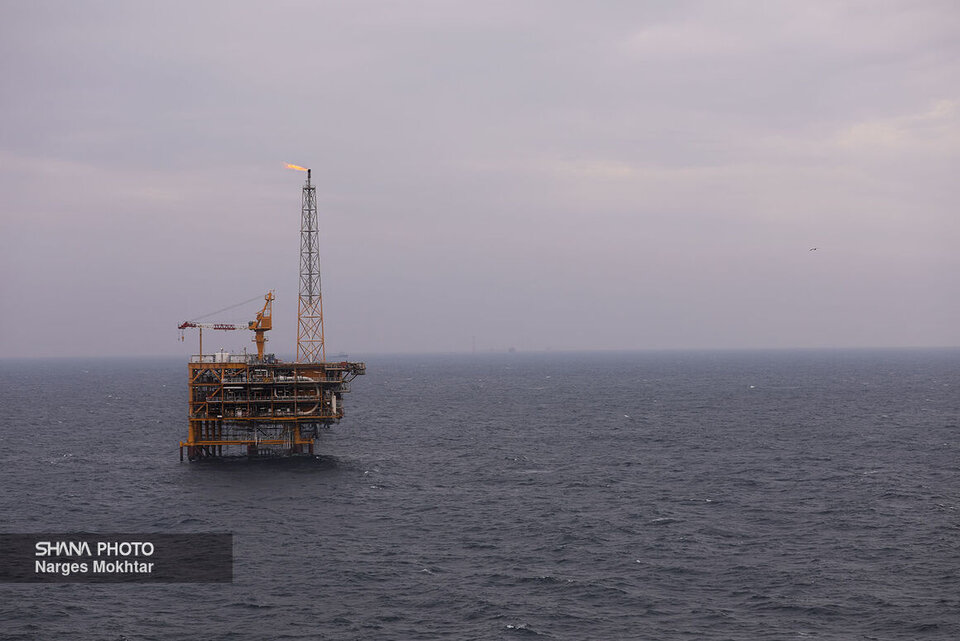IOOC runs oil and gas fields located in 1,800 square kilometers of Persian Gulf waters. IOOC-administered fields hold 96 billion barrels of oil in place, 16 billion barrels of which is recoverable. Official data put at 8.5 billion barrels the accumulated oil recovery from these fields.
Planning to Restore Output Capacity
In line with the 13th administration’s plans to increase oil production and exports, IOOC made necessary arrangements to restore output capacity to pre-sanctions levels. Therefore, two effective measures were urgently taken in Kharg and Lavan, where output had dropped. Plans were also envisaged to increase output from the Esfandiar and Forouzan fields.
Ali-Reza Mehdizadeh, CEO of IOOC, has said: “Due to the corrosion and frequent leaks of crude oil transmission pipeline from Abuzar Platform to Kharg Island during the last two years, the capacity of oil transmission via that line had reached the minimum level, and in the previous period, no serious and effective measures were taken to solve the problem of the pipeline and replace it. Therefore, the NIOC Board of Directors authorized credit allocation for the new pipeline.”
The pipeline then became operational to carry crude oil and the previous decrepit line was put out of service. That came after pigging and necessary tests. According to the CEO of IOOC, the operation of the alternative pipeline last March helped doubled IOOC’s output in the Kharg area.
Reshadat Platform Overhaul
Mehdizadeh said another key measure with regard to enhanced oil recovery pertained to Reshadat Platform in Lavan.
“Over recent years, due to untimely overhaul, power supply to downhole pumps in some wells experienced problems, which halved production rate there,” he said, adding that the production was doubled after the power supply problem was resolved.
He said that the measures undertaken in the Kharg and Lavan areas in the second half of last calendar year largely contributed to IOOC’s enhanced recovery.
Phase 1 of Esfandiar
Another measure undertaken for increased oil production from Iran’s offshore fields and restoration of output to pre-sanctions levels is the implementation of the first phase development of the Esfandiar field, where operations are expected to last 36 months. Iran shares Esfandiar with Saudi Arabia. The NIOC Board of Directors has given its approval to this project whose operation is starting soon.
Phase 1 includes designing, manufacturing and installation of a wellhead platform and drilling of four wells. The crude oil produced in this field, located 95 km southwest of Kharg Island, will be transferred to Kharg Island after being processed at Abuzar Platform.
Furthermore, IOOC eyes drilling an appraisal well to obtain a better knowledge of the structure of the reservoir and designing the following phases.
Forouzan Set to Raise Output
A review of Iran’s oil output plans in the Persian Gulf indicates the emphasis laid on increased production from joint fields. To that end, enhanced recovery from the Forouzan field was envisioned. Development of Forouzan is one of the main four enhanced oil recovery (EOR) projects considered by IOOC.
According to Shahram Motevassel, development manager of Forouzan, given the priority of development of joint fields, accelerating output from Forouzan was put on the agenda. Flow from the well began after 88 days of incessant work. Oil was struck after 2,738 meters of drilling. With the completion of this well, the drilling rig was moved to another well and drilling would continue in other wells.
In parallel with designing, engineering, commodity and equipment purchase, as well as provision of necessary services, two offshore drilling rigs have been installed in this joint field. The drilling of the second well in the Forouzan field is now over.
Based on the initial capacity of the well, 1,000 b/d of oil can be extracted from this well, while in the past days, the flow of the well has been started and the cleaning of the well has also been done.
After drilling the first well in Forouzan oil field in May this year, this is the second well that has reached production in this field. It is planned to drill 26 wells in Forouzan by March 2024.
Crude Oil Storage
In parallel with implementation of oil output plans, IOOC hopes to increase its crude oil storage capacity. To that effect, following the overhaul of Storage Tank No. 4 of the Bahregan area, crude oil storage capacity in the Persian Gulf has increased 500,000 b/d. The overhaul had begun in March 2020 and did not halt despite the covid-19 outbreak. That has increased the Bahregan crude oil storage capacity by 10%, which is very important because Bahregan is a crude oil and condensate terminal.
A 250,000-barrel storage tank is set to come online in Kharg in coming months. Meanwhile, tenders are being held for three other storage tanks in Bahregan with a total nominal capacity of 1.3 million barrels. That would increase Iran’s crude oil storage capacity in the Persian Gulf.
IOOC is one of the largest offshore oil and gas producers in the world. It is tasked with operating oil and gas fields in the Persian Gulf (except for South Pars and North Pars) and the Gulf of Oman. IOOC mainly operates in the Persian Gulf where Iraq, Kuwait, Saudi Arabia, Bahrain, Qatar, the UAE and Oman are also active.
Courtesy of Iran Petroleum


Your Comment